Results
-
£45.95
Little Bit O' Licorice, A - David A. Myers
A fabulous way to showcase your clarinet section. This piece lies very well on the clarinet so it will not be difficult for your young musicians. David has scored this to work well with any beginning band instrumentation. Its catchy melody will have your audience humming the tune all the way home. A great change of pace for your concert!
Estimated dispatch 7-14 working days
-
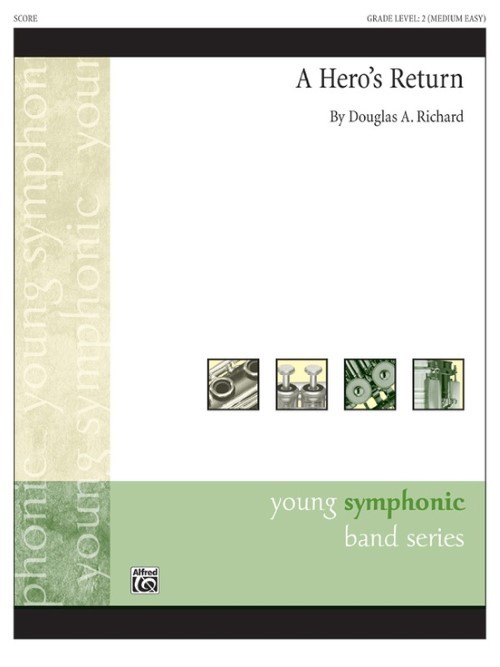 £52.00
£52.00A Hero's Return (Concert Band - Score and Parts) - Richard, Douglas A.
A Hero's Return was written for the West Point Middle School Band, located at the United States Military Academy, West Point, NY. The opening section conveys the celebratory atmosphere of when a hero comes home to friends and family. The middle section represents the quiet tribute we pay to the fond memories of heroes no longer in our midst. The return to the initial theme welcomes not only the hero returning today, but symbolises the hopes for the safe return of all our heroes who so bravely serve their nation.Duration: 4.00
Estimated dispatch 7-14 working days
-
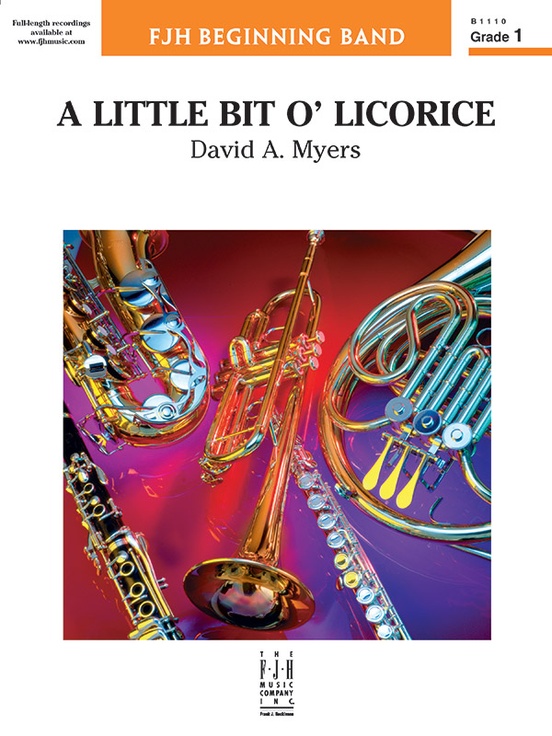 £45.95
£45.95A Little Bit O' Licorice - David A. Myers
A fabulous way to showcase your clarinet section. This piece lies very well on the clarinet so it will not be difficult for your young musicians. David has scored this to work well with any beginning band instrumentation. Its catchy melody will have your audience humming the tune all the way home. A great change of pace for your concert! (2:00)
Estimated dispatch 3-5 working days
-
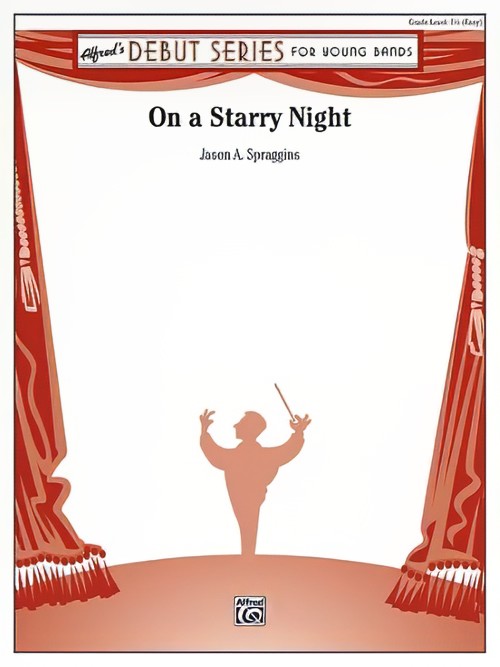 £52.95
£52.95On a Starry Night (Concert Band - Score and Parts) - Spraggins, Jason A.
Inspired by the painting of the same title by the famed Dutch painter Vincent van Gogh, this work evokes the calmness and serenity of the starry scene while capturing the grandeur of the painting's swirling sky and dramatic moon, providing a sense of abiding warmth, peace, and hope. Duration: 2:15
Estimated dispatch 7-14 working days
-
 £148.99
£148.99Rising into a new era - Hermann Pallhuber
"Rising into a New Era" was commissioned by the city of Landeck in 2023 to commemorate its 100th anniversary since being declared a city. The composition serves as the introductory part of a trilogy, encapsulating the years from 1923 to 1956, depicting Landeck's transformation from a market town to a city. The outset of the piece is characterized by a reserved and hushed atmosphere, reflecting the initial uncertainty during a period of economic challenges. The optimistic anticipation of a new beginning is only echoed by the sound of the city's new bells. The central motif, threading throughout the entire composition, is derived from the name of the city: LAnDECk (A-D-E-C). This motif unfolds at the onset within the resonance of the city's bells, gradually evolving into the main theme through the gentle tones of the clarinets. Following the initial years of the burgeoning city, where a positive societal shift and newfound security are symbolized by a second musical theme, the sudden eruption of the Second World War disrupts this progress. A mournful melody, borrowed from the cheerful second theme of the piece, speaks of sorrow, nostalgia, yet also solace and hope for peace and freedom. A "Vivace furioso" captures the uncertainties and intense turbulence of the war. These tumultuous emotions gradually settle, culminating after a delicate oboe and saxophone solo into the now powerful main theme presented in the form of a majestic chorale. A "Vivace con bravura" brings the composition to a radiant conclusion, signifying a strengthened future for the city of Landeck.
Estimated dispatch 7-14 working days
-
 £152.99
£152.99To A New Dawn - Philip Sparke
To A New Dawn was commissioned by the United States Continental Army Band - Captain Timothy J. Holtan, Commander and Conductor.The brief was for a piece to celebrate the 3rd Millennium and it was the composer's aim to provide a work which, as well as looking forward to the challenges of the new century, also contained moments of reflection about the last one.After a bright introduction featuring the trumpets a perky theme, passing quickly through several keys, appears on the woodwinds. A solo trumpet takes up a new theme over bubbling quavers (eighth notes) and this leads to a rhythmic figure on low clarinets, followed by the upper woodwinds. A brass interlude follows and, after ashort bridge passage, an oboe takes up a contrasting legato tune that builds to a climax.An andante section follows with solos for horn and flugel horn (or trumpet) and a florid flute cadenza. A passionate climax leads back to the faster music and, eventually, to a full recapitulation, revisiting the earlier material before a lively coda close the work as it began.
Estimated dispatch 7-14 working days
-
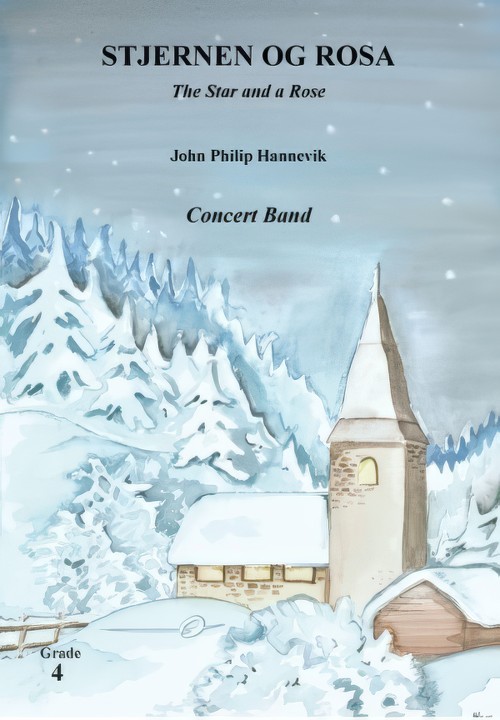 £122.20
£122.20Stjernen og Rosa (The Star and a Rose) (Concert Band - Score and Parts) - Hannevik, John Philip
The Star and a Rose is a big-scale Christmas piece for band, featuring four seasonal chorales.The first is a Gregorian-like chant Hodie Christus natus est.In this section of the piece, a soloist can be placed away from the band, maybe on a gallery. The soloist can be a tenor instrument, maybe trombone, or you can feature a vocal soloist. After this, the music leads us on to the old German Christmas chorale Lo, how a rose e'er blooming. This song is given a fairly rhythmical treatment, but make sure that the melody is presented in a cantabile style. An interlude follows, before the piece presents one of the most used and loved Scandinavian Christmas chorales, Mitt hjerte alltid vanker (My Heart will always wander), composed by the Danish bishop Hans Adolph Brorson around 1732. This song is building towards a climax, before the solo horn brings it all down to the Stable view described in the lyrics. Then comes a transition that brings us in to the final section of the piece, which presents the international Christmas Carol Adeste Fideles. As many will notice, I have borrowed a section from David Wilcocks majestic harmonization towards the end.The title of the piece has its background form the lyrics in My heart will always wander, where the text speaks about the stars in the sky. But also in the Latin text for Adeste Fideles: Stella duce, Magi, Christum adorantes. The Rose is of course from the lyrics in the chorale Lo, how a Rose.Duration: 10.30
Estimated dispatch 7-14 working days
-
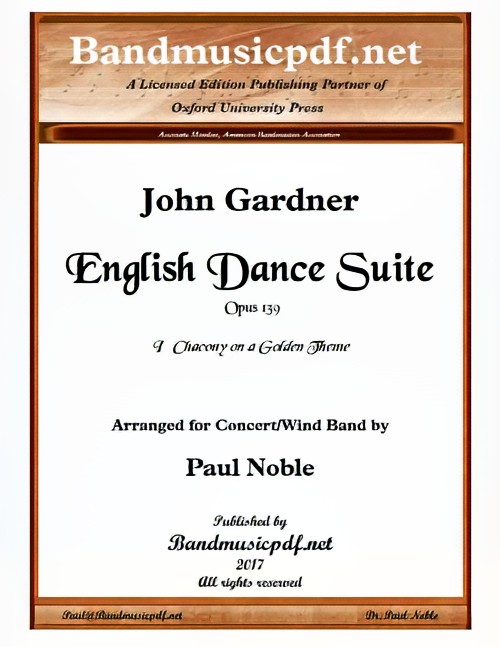 £125.00
£125.00English Dance Suite - I. Chacony on a Golden Theme (Concert Band - Score and Parts) - Gardner, John - Noble, Paul
Arranged for the modern Concert/Wind Band, scored for three trumpets, reasonable doubling of parts where the original musical effect is not altered so that players can have a more responsible and enjoyable experience, more legible parts with less doubling on one staff, etc. The piece is offered either as a complete suite of seven movements, and also as seven individual movements which may be purchased independently. The English Dance Suite was originally composed by John Gardner for Wind Band, and has been re-set for the modern Concert Band instrumentation. Both the original version, edited and type-set by Paul Noble, and this arrangement are first editions now available for purchase to bands around the world. The set of seven Renaissance dances depict John Gardner's love of Scottish music, the Renaissance heritage, and some of his own mischievous approach to music. The first movement, Chacony on a Golden Theme, reminiscent of the Allegro movement of Purcell's Golden Sonata, is much used as a vehicle for variation on a repeated short harmonic progression, often involving a fairly short repetitive bass-line which offered a compositional outline for variation, decoration, figuration and melodic invention. In this it closely resembles the passacaglia. The Alman originated in the 16th century as a duple metere dance of moderate tempo, already considered very old, with a characteristic double-knocking upbeat of one or occasionally three sixteenth notes. It appears to have derived from a German dance but no identifiable dance and no German dance instructions from this era survive. The Hornpipe, usually in 3/2 dance rhythm, is an Irish, Scottish and English dance. It is done in hard shoes, which are used to help keep track of how the dancer keeps in time. There are two variations of the hornpipe dance: fast and slow. Usually, more experienced dancers will do the slow hornpipe but younger dancers will start out with the fast hornpipe and then switch in later years. The Corranto is a 16th-century court dance characterized by short advances and retreats, in quick triple time. The Volta (Italian: the turn or turning) is an anglicised name from the later Renaissance. Its main figure consisted of a turn and lift in a sort of closed position. The Pavan is a slow processional dance common in Europe during the 16th century. The Reel, indigenous to Scotland, consists largely of quaver (eighth note) movement with an accent on the first and third beats of the bar.
Estimated dispatch 7-14 working days
-
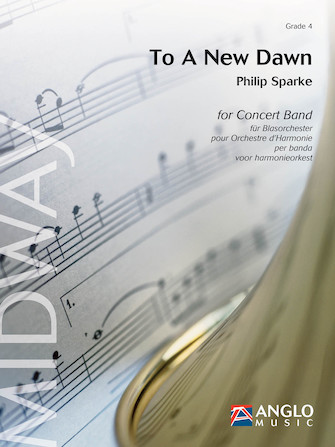 £152.99
£152.99To A New Dawn (Concert Band - Score and Parts) - Sparke, Philip
To A New Dawn was commissioned by the United States Continental Army Band - Captain Timothy J. Holtan, Commander and Conductor.The brief was for a piece to celebrate the 3rd Millennium and it was the composer's aim to provide a work which, as well as looking forward to the challenges of the new century, also contained moments of reflection about the last one.After a bright introduction featuring the trumpets a perky theme, passing quickly through several keys, appears on the woodwinds. A solo trumpet takes up a new theme over bubbling quavers (eighth notes) and this leads to a rhythmic figure on low clarinets, followed by the upper woodwinds. A brass interlude follows and, after a short bridge passage, an oboe takes up a contrasting legato tune that builds to a climax.An andante section follows with solos for horn and flugel horn (or trumpet) and a florid flute cadenza. A passionate climax leads back to the faster music and, eventually, to a full recapitulation, revisiting the earlier material before a lively coda close the work as it began.Duration: 9:40
Estimated dispatch 7-14 working days
-
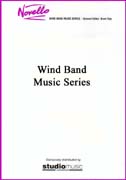 £37.95
£37.95PLAIN MAN'S HAMMER, A (Novello Symphonic Band) Extra Score - Dalby, Martin
Extra Score only. The whole shape of A Plain Man's Hammer owes something to classical sonata form. It is a two part form of which the first is an exposition containing two tonally contrasted subjects and the second contains a development section where harmonies move rapidly towards a recapitulation of the two original subjects, this time the contrast being reconciled in the home key. The first large section of A Plain Man's Hammer is an exposition containing two main ideas and other material associated with them. Development is replaced by a parade of incomplete parodies: a waltz almost in the style of Chopin; a sort of Tango; a Mahlerian march; something close to Janacek; a cheap imitation of a Flamenco; a corruption of Oranges and Lemons; a pop song; a military march which gets somewhat out of hand; a Viennese Waltz to set your feet tripping, and an even cheaper imitation of a Flamenco. At the end of the work the associated material of the opening reappears in maturity; the major ideas play a subservient role, reappearing only in the final coda. Duration: 14 mins.
Estimated dispatch 7-14 working days
